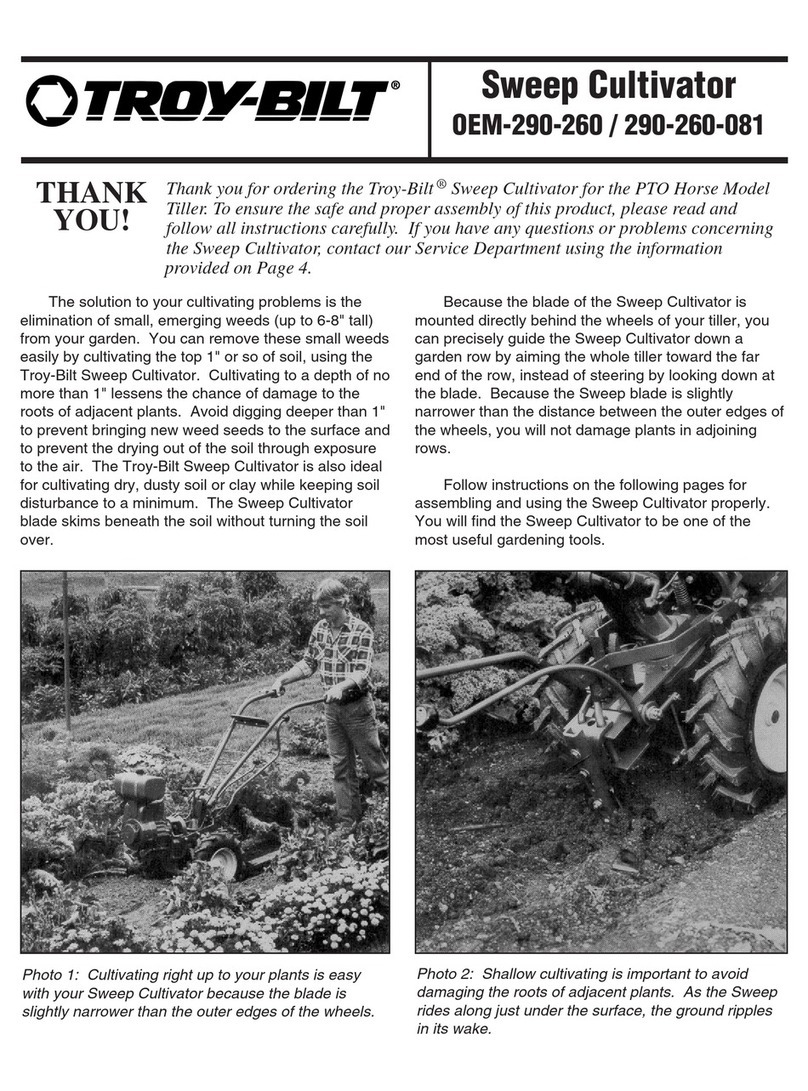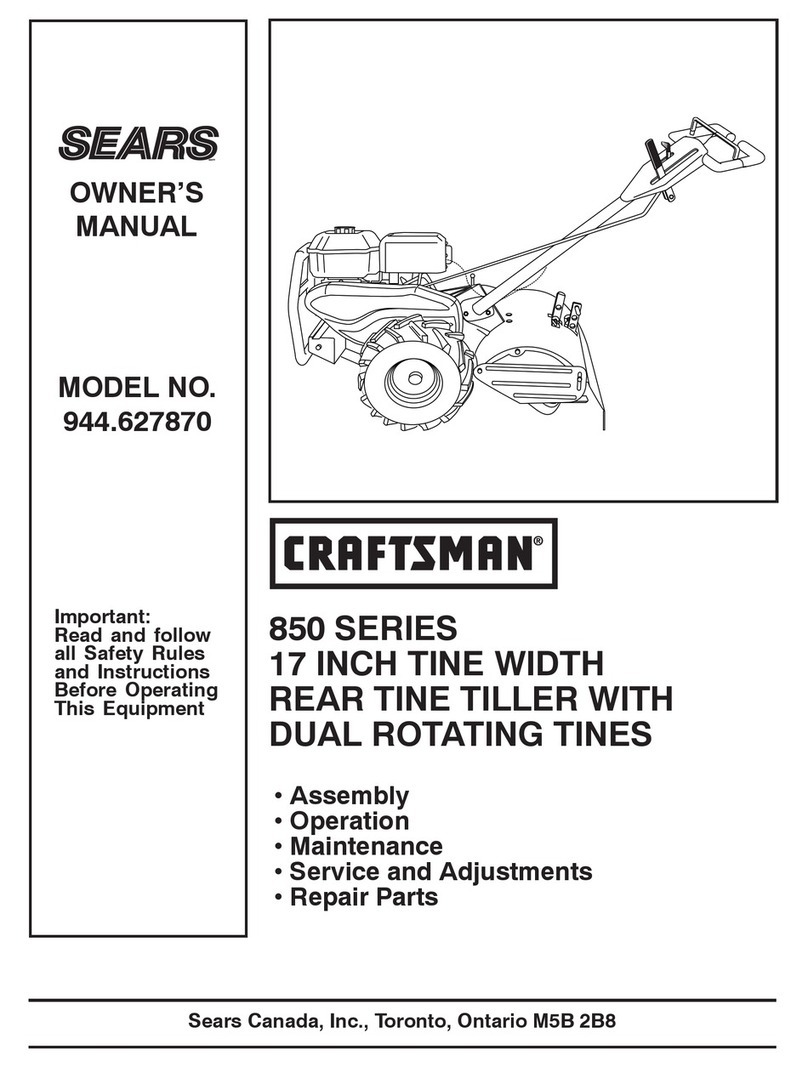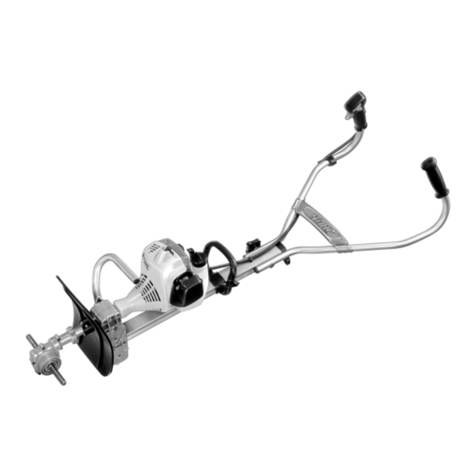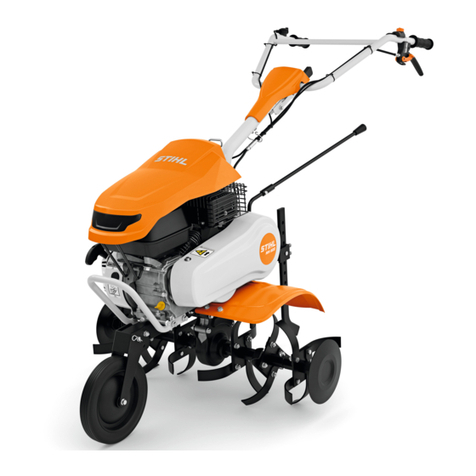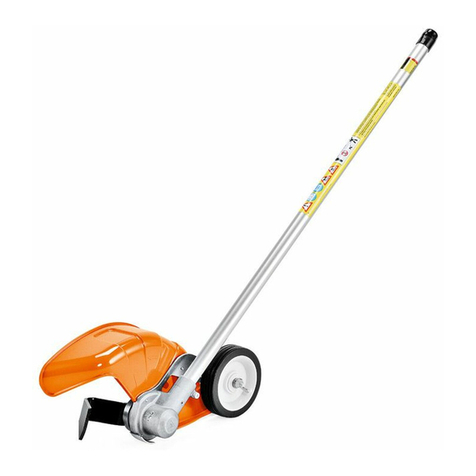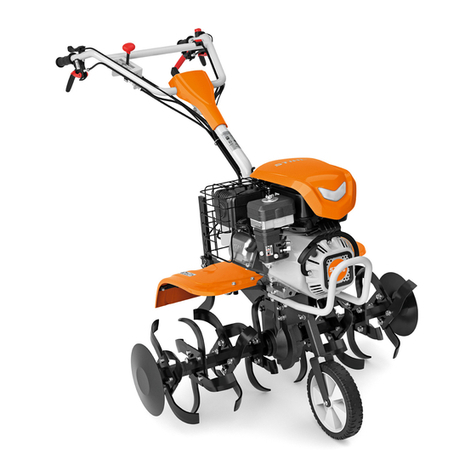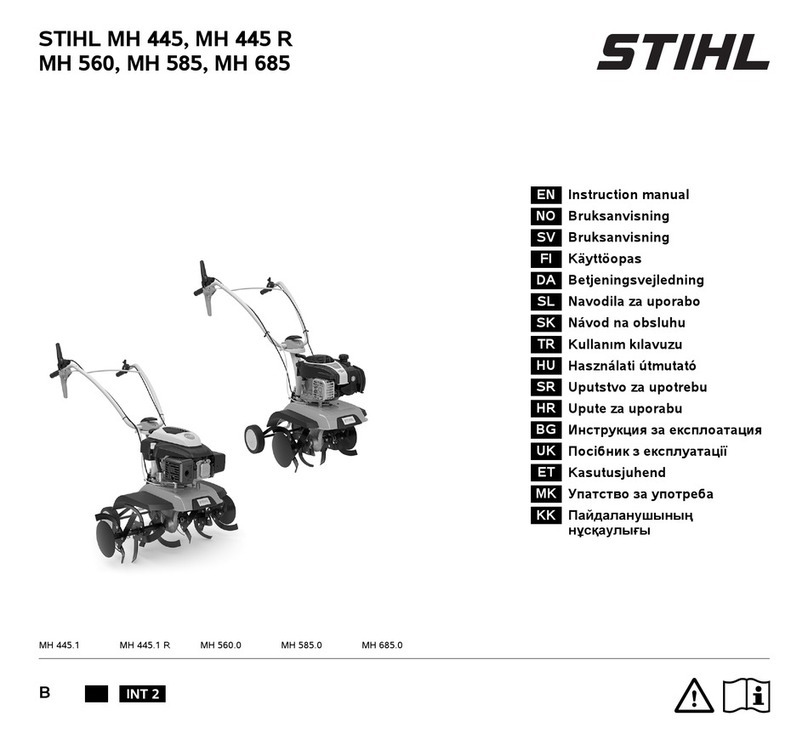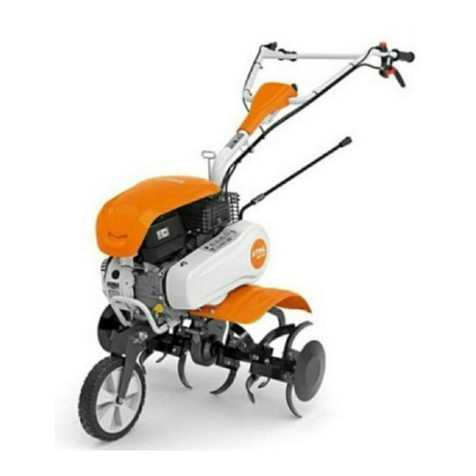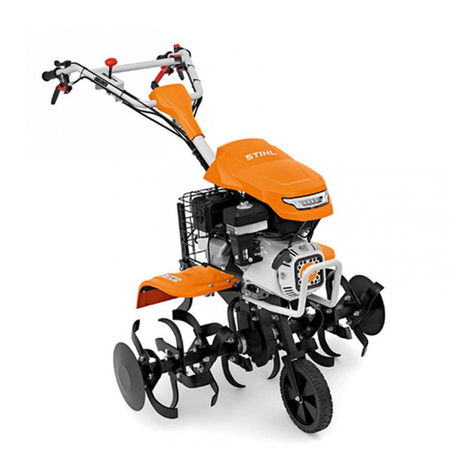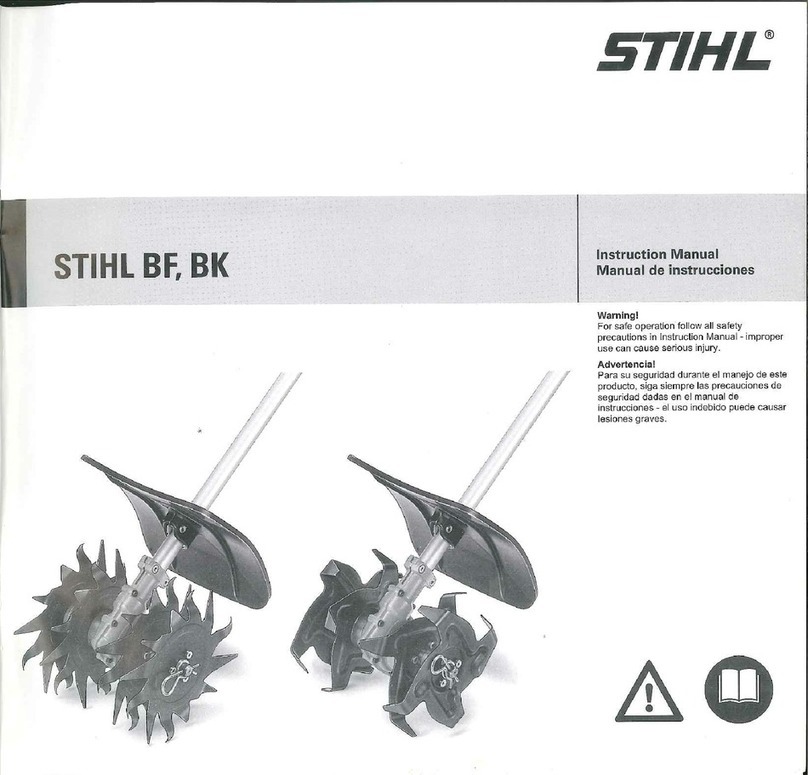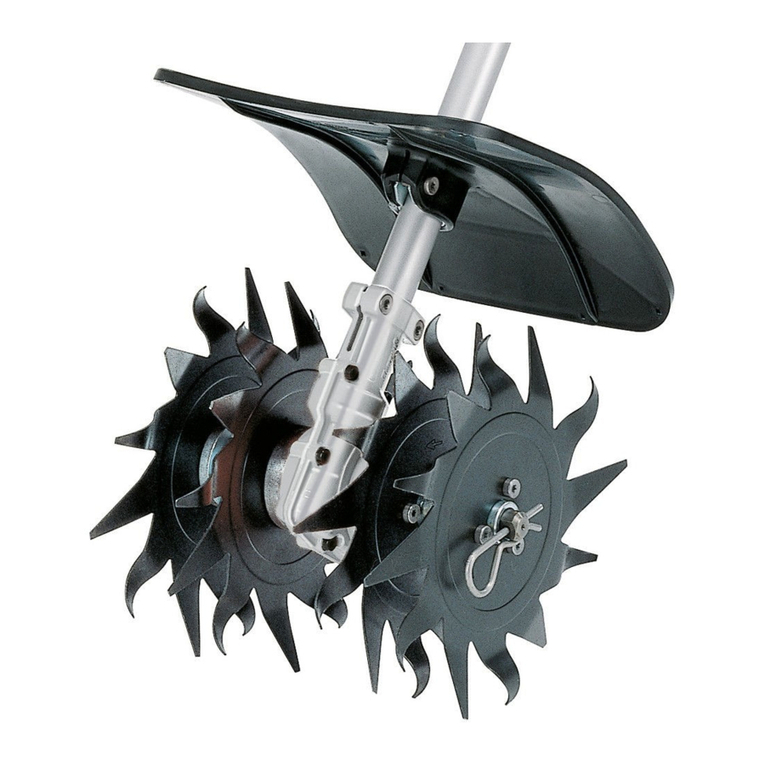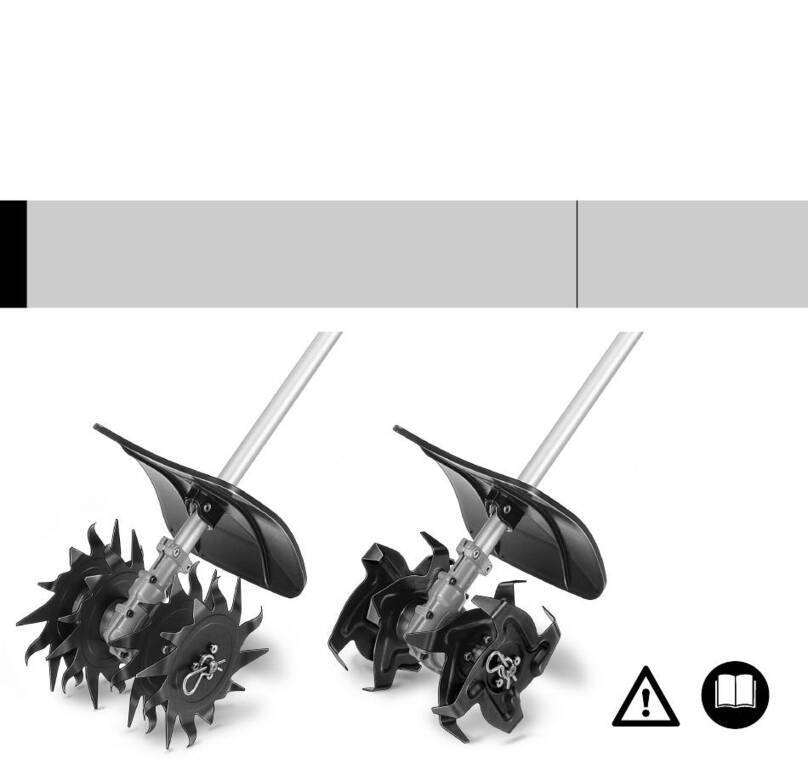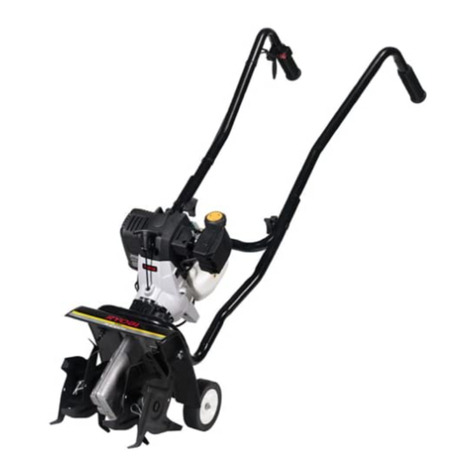
4.7 Fuel and Refuelling
WARNING
■The fuel used for this tiller is petrol. Petrol is
extremely inflammable. If petrol comes into
contact with an open flame or hot objects, it
may cause fires or explosions. This may result
in serious or fatal injury to people and damage
to property.
►Protect petrol from heat and fire.
► Do not spill petrol.
► If petrol is spilled: wipe up the petrol with a
cloth and wait until all parts of the tiller are
dry before attempting to start the engine.
►Do not smoke.
► Do not refuel in the vicinity of flames.
► Before refuelling, stop the engine and allow
it to cool.
► If the tank needs to be emptied: do this out
of doors.
► Start the engine at least 3 m away from the
refuelling site.
► Never store the tiller with petrol in the tank
inside a building.
■ Breathing in petrol fumes may result in poison‐
ing.
► Do not breathe in petrol fumes.
► Refuel in a well-ventilated place.
■ The tiller warms up while working. The petrol
expands and overpressure may occur in the
fuel tank. Petrol may gush out when the fuel
tank cap is opened. The gushing petrol may
ignite. This may result in serious injury to the
user.
►Allow the tiller to cool down before opening
the fuel tank cap.
■ Clothing that comes into contact with petrol is
highly inflammable. This may result in serious
or fatal injury to people and damage to prop‐
erty.
►If clothing comes into contact with petrol:
change clothing.
■ Petrol poses a risk to the environment.
► Do not spill petrol.
► Dispose of petrol in accordance with regula‐
tions and in an environmentally acceptable
way.
■If petrol comes in contact with the skin or
eyes, this may cause irritation.
► Avoid contact with petrol.
► In the event of contact with the skin: wash
the affected areas with plenty of soap and
water.
►In the event of contact with the eyes: rinse
the eyes with plenty of water for at least 15
minutes and seek medical attention.
■Overflowed petrol may ignite. This may result
in serious or fatal injury to people and damage
to property.
►Clean any surfaces contaminated with pet‐
rol.
► Avoid attempts at starting until the petrol
fumes have dispersed.
■ The tiller's ignition system generates sparks.
Sparks may escape and cause fires and
explosions in highly inflammable or explosive
environments. This may result in serious or
fatal injury to people and damage to property.
►Use the spark plugs described in the engine
instruction manual.
► Screw in the spark plug and tighten firmly.
► Press on the spark plug socket firmly.
■ The tiller may be damaged if it is refuelled with
petrol that is not suitable for the engine.
► Use fresh, good quality unleaded petrol.
► Observe the specifications in the engine
instruction manual.
4.8 Working
WARNING
■The user may lose control of the tiller if they
do not start the engine correctly. This may
result in serious injury to the user.
►Start the engine as described in this instruc‐
tion manual.
■ In certain situations, the user may no longer
be able to concentrate on their work. The user
may lose control of the tiller, trip, fall and be
seriously injured.
►Work calmly and carefully.
► If the light and visibility conditions are poor:
do not use the tiller.
► Operate the tiller alone.
► Guide the hoes close to the ground.
► Watch out for obstacles.
► Do not tilt the tiller.
► If working on stony or hard ground: do not
work at full throttle.
► Work standing on the ground and maintain
balance.
► If signs of fatigue occur: take a break.
► If working on a slope: work across the
slope.
► Do not work on slopes with an inclination
greater than 15° (26.8%).
■ Exhaust fumes are produced when the engine
is running. Breathing in exhaust fumes may
result in poisoning.
4 Safety Precautions English
0478-404-9905-C 7



